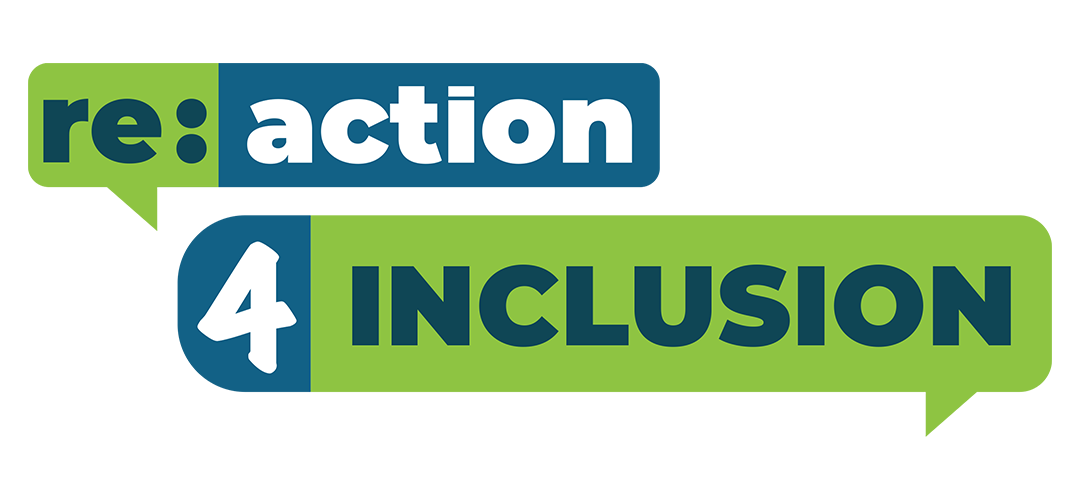A Toolkit for community builders
A Resource To Empower Youth and Adults To Work Together As Champions of Community Inclusion

a TOOLKIT FOR YOU
The flipbook is interactive and includes links to videos, websites and other resources that might be helpful to you.
Check out our training. Youth from the movement would be happy to come to your school and facilitate with you!
Contributors
It is the experiences of youth and allies, their feedback and work that has made this resource possible. During the research and design process, we conducted interviews, analyzed surveys and collected tips and strategies from youth ambassadors and adult allies. We have pulled together a collection of resources, activities and strategies that will help both youth and their allies to continue to shift the culture of our society and change the narrative of disability.

For more information regarding the development of Re:Action4Inclusion’s Toolkit, resources or training opportunities, please contact us using the portal provided on this page HERE.
How is it organized?
Two chapters, dozens of resources, tons of innovative ideas!
This toolkit has been organized into two separate chapters. The first is intended for youth, giving you essential information to consider, resources, and discussion topics that can be used to engage your peers in the conversation on inclusion. The second chapter is intended for community or youth-focused organizations. Essential information, resources, and important feedback are provided within each section. It is our desire that these resources empower people as community builders as you endeavour to authentically implement
inclusive practices with youth in your community.
What is youth engagement?
Youth engagement moves beyond a participatory model and includes a framework that allows youth to develop, lead, and carry out community projects and initiatives. This move from participation to engagement ensures that activities are centred around issues of inclusion, rights, and citizenship. Therefore, youth engagement refers to contexts in which youth are empowered within leadership roles and are active participants in setting the agenda. This means that youth are given valuable social roles where their contributions and feedback are expected, applied, and valued.
Our Definition of Inclusion
The 21st century calls for leaders who are conscious of diversity and who understand the powerful but basic human need to belong. Authentic inclusion requires that people recognize, value, and expect the contributions each person can make. Authenticity is achieved when relationships are seeded in a genuine appreciation and mutual respect for another person. Authentic inclusion does not come from a lens of charity, tokenism, or pity.
What is Tokenism?
This video was created by one of our youth advisers, Cheryl Cheung.
